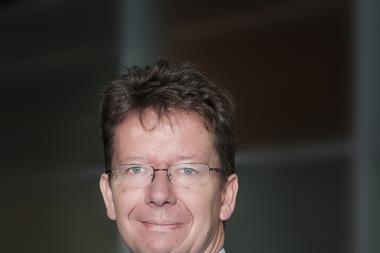Consultancies have warned that interest rates have fallen so far this year that Dutch pension funds may be forced to increase contributions or cut costs on pension arrangements.
Dennis van Ek, an actuary at Mercer, estimated that pension funds would need to increase their premiums for 2016 by at least 10% to achieve their targets.
As a consequence, defined benefit (DB) plans and collective defined contribution (DC) schemes that base their contributions on the market rate plus the ultimate forward rate (UFR) could see annual pensions accrual – usually 1.875% – fall by 0.2 percentage points, he said.
Mercer noted that the 30-year swap rate had fallen from 1.5% to 1.2% at the time when the European Central Bank (ECB) launched its quantitative easing (QE) programme.
As of last week, the rate dropped even further to 1%.
“Since the introduction of QE, the cost of pensions has risen by 10%, or 1% of the salary on average,” Van Ek said.
He warned that, in the coming decades, fixed income returns could structurally fall short of the interest rates that had been factored into liabilities.
Mark van de Velde, senior client consultant at Aon Hewitt, noted that the initial effect of the interest-rate drop would be limited to approximately 2% for pension funds that apply a cushioned contribution for a 10-year period.
He calculated an effect of 6-7% if contributions are cushioned and drawn from assumptions for returns.
However, Van de Velde stressed that the predictions were based on the current UFR of 4.2% that must be used to discount liabilities.
“If the Cabinet were to reduce the UFR as expected before 1 July, contributions must increase by an additional 5%,” he said.
Towers Watson, meanwhile, underlined the contradiction that the new financial assessment framework (nFTK) dictates that pension funds must establish their premium policy before 1 July, but that the actual contribution must be drawn from market rates during the fourth quarter.
Wichert Hoekert, senior consultant for retirement solutions, said: “This could lead to undesired effects if interest rates change after the social partners have agreed on a policy.”
He suggested it would be more “practical” if the interest level at the moment of the policy decision could also be the criterion for the new contribution.
Commenting on the developments, Jobert Koomans, executive board member of the €4bn pension fund for care insurers (SBZ), said its premium needed to be increased by 2 percentage points to 26% of the pensionable salary to achieve target accrual.
The €43bn metal scheme PME, which fixed its contribution at 24.1% for the next five years, said it would draw on an equalisation fund to stabilise premiums.
However, PME’s spokeswoman said the drop in interest rates had increased the chances that this financial reserve may turn out to be insufficient.
The Pensions Federation said it was “very worried” about the low interest rates and that it feared “disastrous consequences” for pensions.
In its opinion, Jetta Klijnsma, state secretary for Social Affairs, has underestimated the problem.
However, a spokeswoman for the state secretary told IPE Klijnsma recognised the consequences of continually low interest rates, and that she was willing to discuss the issue with Dutch companies and unions.
She added that the state secretary was also exploring options for easing investment restrictions for pension funds, as the Federation had called for earlier.












No comments yet